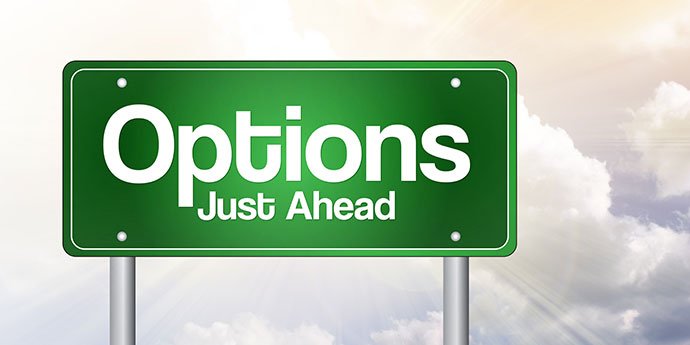
One of the more esoteric aspects of stock options is the machinations behind their pricing. Today we are going to look at the factors that go into the pricing of an option, and explain how it all works. When we’re done, you should have a solid grasp of the fundamentals of options pricing, and enough information to begin formulating the best option trading strategies, or to seek out a professional options trading advisory service provider.
Several factors influence the price of an option. Among these are the current stock price, the intrinsic value, time to expiration, volatility, and the prevailing market interest rates. A number of models are used to compute the actual price, the most widely used of which is the Black-Scholes model. We will explore each of these factors in some depth, though we won’t go into the workings of the actual model until part 2.
As one might imagine, the price of the option varies with the current price of the stock. When the price of the stock rises, so does the price of the call option. Of course, there is not a strict one-to-one relationship between the two prices, but they do move in tandem. Likewise, when the value of the stock decreases, so does the price of the option.
The intrinsic value is the value of the option if it were exercised today. This is related to the excess of the call strike price over the underlying stock’s current price. If the strike price is in excess of the current stock price, one does not exercise the call option, as it would lose money. Similarly for put options, if the current price of the stock is greater than the strike price, one would not exercise the option. More simply, we can represent the intrinsic value by the following simple equations:
Call Option Intrinsic Value = Underlying Stock Current Price – Call Strike Price
Put Option Intrinsic Value = Put Strike Price – Underlying Stock Current Price
These intrinsic values are positive definite. For example, suppose a stock is trading at $20, a call option with a $10 stock price would have an intrinsic value of $10 because you could exercise the option and buy the stock at $10, and then turn around and sell it for $20, which would net you a tidy $10 profit. If the strike price were $22, then the option would have no value because you would be buying a $20 stock for $22. Similar reasoning applies to put options.
The next component is the time value of the option. Of course, all investment vehicles bare some sort of risk associated with time. In the case of options, the time value reflects the probability that the option will end up in the money. Generally, the more time until the option expires, the more likely it is to end up in the money. The relationship with time isn’t linear, however. It’s an exponential decay, in fact. Specifically, the option loses one third of its value in the first half of its life, and another two thirds in the last half of its life. If this is mysterious, it’s reasonable to seek out the help of an options trading advisory service to help make sense of it all.
Central to the concept of the risk premium is the price volatility of the stock under option. If the stock is relatively stable, the time value is low because an investor doesn’t expect the stock to move much before it is exercised. A highly volatile stock has a large time value, because a reasonable investor would expect a premium to compensate for that volatility.
Assessment of volatility can be performed in two ways. One can look backwards over time and assess the volatility of the stock in the past. This information is used to make reasonable predictions about future volatility. One could also perform a forward looking analysis, which would take into account the stock within the broader market. This is called implied volatility, and it is widely used in theoretical models to price options.
The relationship between interest rates and stock options is somewhat more complex. In general, as interest rates go up the price of a call option will increase, while the price of a put option will decrease. This is because options are relatively inexpensive, so an investor would pay a premium on a call option (rather than buying 100 shares of the stock outright) and invest the extra money in some other vehicle to generate a return.
With respect to put options, interest rates are also a critical factor in deciding when to exercise the option. In a high interest rate environment, there is a strong incentive to exercise the put early to invest the proceeds in a high yield producing investment vehicle, other than the stock under option. This decision will vary from investor to investor, of course, as everyone has their own risk tolerance and opportunity costs for their money.
In summary, a number of factors go into the pricing of stock options as well as your formulation of the best options trading strategy. Current stock prices, as well as their volatility, are especially important. More volatile stocks command higher premiums since volatility is a risk that requires a premium as compensation. Prevailing interest rates cloud the situation by forcing comparisons to other investment vehicles available for the investor. All of these factors are ultimately entered into a complicated mathematical model, which then outputs a price based on the inputs. These models will be discussed in part 2, so stay tuned!